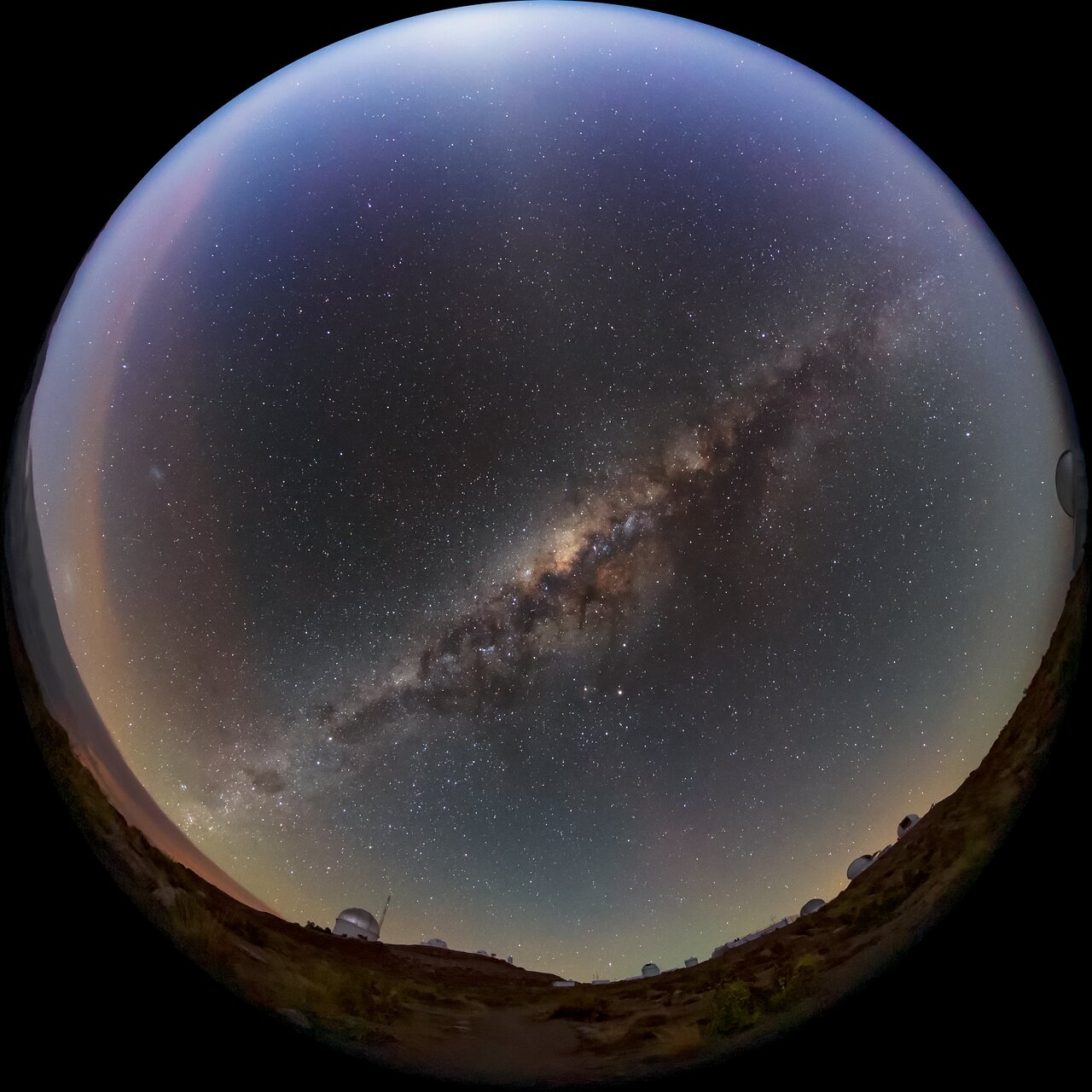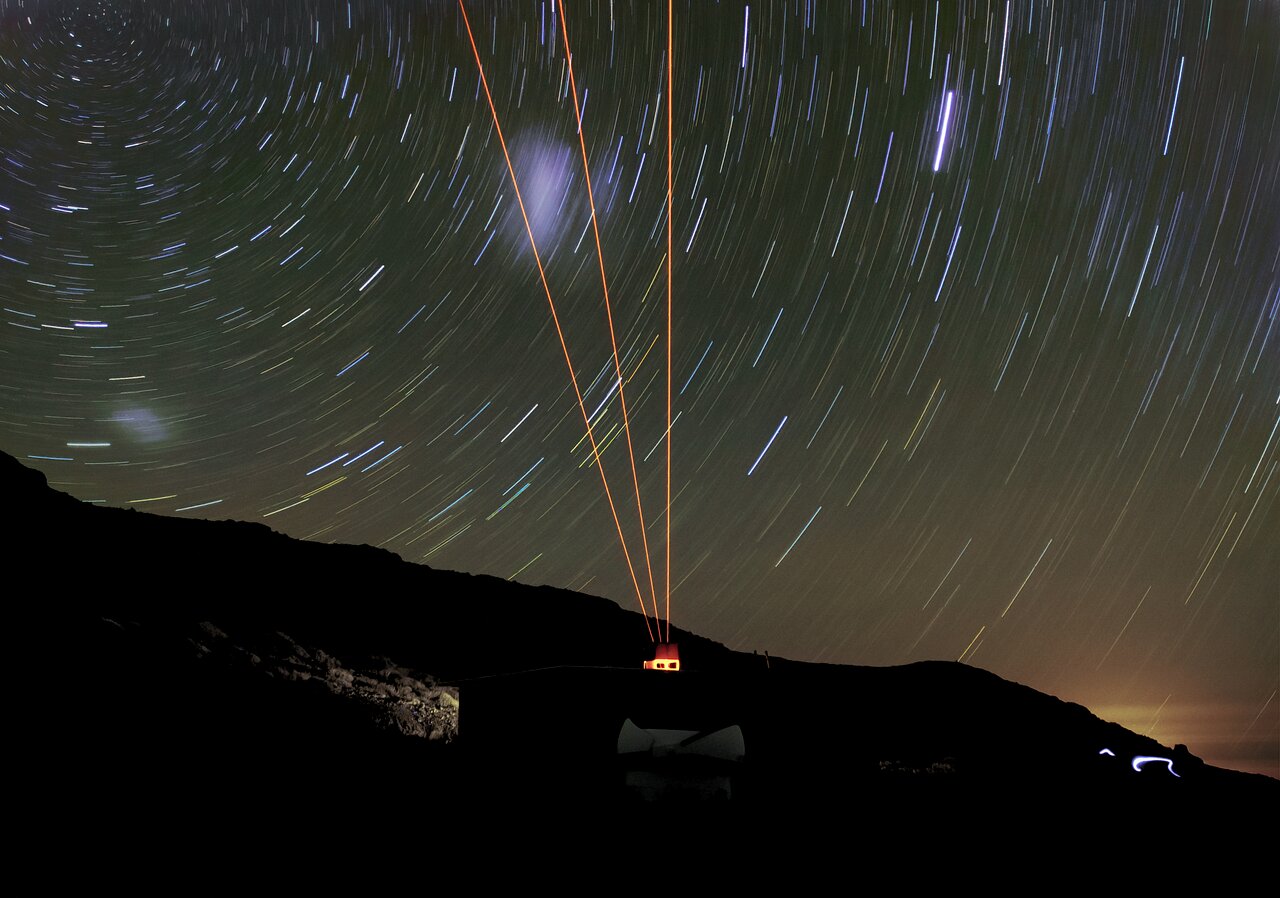
Studying Earth’s atmosphere with Andes Lidar Observatory
Why being almost 3000 meters above sea level offers the ideal conditions for getting to know our planet’s climate and predict space weather
Profile
Facility Profile
Name:
- Andes Lidar Observatory
Location:
- Cerro Pachón, Chile
First light date:
- 2009
Altitude:
- 2737 meters
Science goals:
- Atmospheric composition, gravity wave breaking, atmospheric instability processes, planetary waves, gravity wave-tide interactions, eddy flux and turbulence diffusion, gravity wave flux
13 July 2021
Not all of NOIRLab’s facilities explore space — some study the Earth itself, specifically our upper atmosphere and its interaction with the solar wind at the boundary of space.
The National Science Foundation-funded Andes Lidar Observatory (ALO) is one such facility, perched 2737 meters above sea level on the flanks of Cerro Pachón in Chile, which is also home to NOIRLab’s Gemini South Observatory, the Southern Astrophysical Research (SOAR) telescope, and the upcoming Vera C. Rubin Observatory. It’s an ideal location to study the atmosphere, as there are on average more than 300 clear and extremely dark nights each year.
As its name suggests, ALO’s main instrument is a sodium resonance lidar (Light Detection and Ranging), which operates by firing a laser into the sky, causing sodium atoms at altitudes of 80 to 110 kilometers to fluoresce so that scientists on the ground can detect them. They then study the motions and density of the sodium atoms to better understand what is happening at those altitudes, in the atmospheric layers scientists refer to as the mesosphere and lower thermosphere.
“It’s important to know the upper atmosphere processes to develop better, higher precision forecast models for climate and space weather predictions,” says Fabio Vargas, who is a research scientist studying geophysics, aeronomy (the study of the upper atmosphere) and remote sensing at the University of Illinois at Urbana-Champaign. Key to this is understanding the various processes — chemical, dynamical and physical — that play out in the different regions of the atmosphere, and how those regions interact with each other and with the space environment above them.
Alongside its key instrument, the Andes Lidar Observatory houses a suite of other instruments including an infrared imager, mesosphere temperature mapper, meteor radar and all sky imager.
The sodium in the mesosphere tells an interesting story. Discovered in 1929, the sodium is actually of extraterrestrial origin, having been vaporized off meteors that burn up as they enter the atmosphere. The sodium exists as a layer that is only about 10 kilometers deep on average and can vary in altitude. Its density can also change with the seasons, amounting to roughly 5000 neutral sodium atoms per cubic centimeter. ALO’s lidar isn’t the only laser targeted at the sodium layer — the lasers of various observatories’ adaptive optics systems, including those of Gemini’s, create artificial stars by energizing sodium atoms in the layer. This in turn causes them to resonate and glow to form an artificial star anywhere in the sky which serves as a reference for making adaptive optics corrections.
It’s important to know the upper atmosphere processes to develop better, higher precision forecast models for climate and space weather predictions.
Given that the characteristics of the sodium layer can change with seasonal conditions, it can therefore act as a proxy for the behavior of the rest of the atmosphere at that altitude. ALO doesn’t just study the sodium layer, though.
For example, there is airglow, which is a faint light emitted by the Earth’s atmosphere that often takes on a strange, shimmering, green and red color in the night sky. It’s produced mainly as a consequence of ultraviolet light dissociating oxygen molecules in the atmosphere during the day, creating a population of free oxygen atoms that undergo a variety of chemical reactions when night falls, releasing chemical energy that manifests as airglow.
“All-sky CCD cameras provide images of the nighttime sky where we can observe waves perturbing the airglow brightness,” says Vargas,
The waves that ALO’s cameras observe affecting the brightness of the airglow above Cerro Pachón can come in more than one form, be they planetary Rossby waves generated by high-altitude winds, or a kind of gravity wave (not to be confused with gravitational waves from colliding black holes and neutron stars). Gravity waves are caused by moving air masses putting the atmosphere into a state of disequilibrium, with the waves transferring momentum from lower in the atmosphere to the mesosphere, the latter of which extends from altitudes of 50 to 85 kilometers.
The Andes Lidar Observatory’s main instrument is a sodium resonance lidar, which operates by firing a laser into the sky.
“Waves are ubiquitous features in nighttime images once they disrupt the night sky’s brightness that is dominated by airglow emissions around 80 to 100 kilometers in altitude,” says Vargas. “ALO’s sodium-resonance lidar and the meteor radar systems provide altitude versus time measurements of temperature, windspeed, and density, which are also perturbed by waves.”
Given the growing amount of data from atmospheric studies such as those taking place at ALO, Vargas is now applying artificial intelligence techniques, such as machine learning algorithms, to make sense of it all.
“The ALO is a world-class facility providing high-quality data to the scientific community for more than ten years,” says Vargas. “This growing amount of data can only be handled by learning algorithms trained to identify, classify, and categorize data into information, allowing the achievement of scientific breakthroughs that cannot be uncovered otherwise.”
Links





